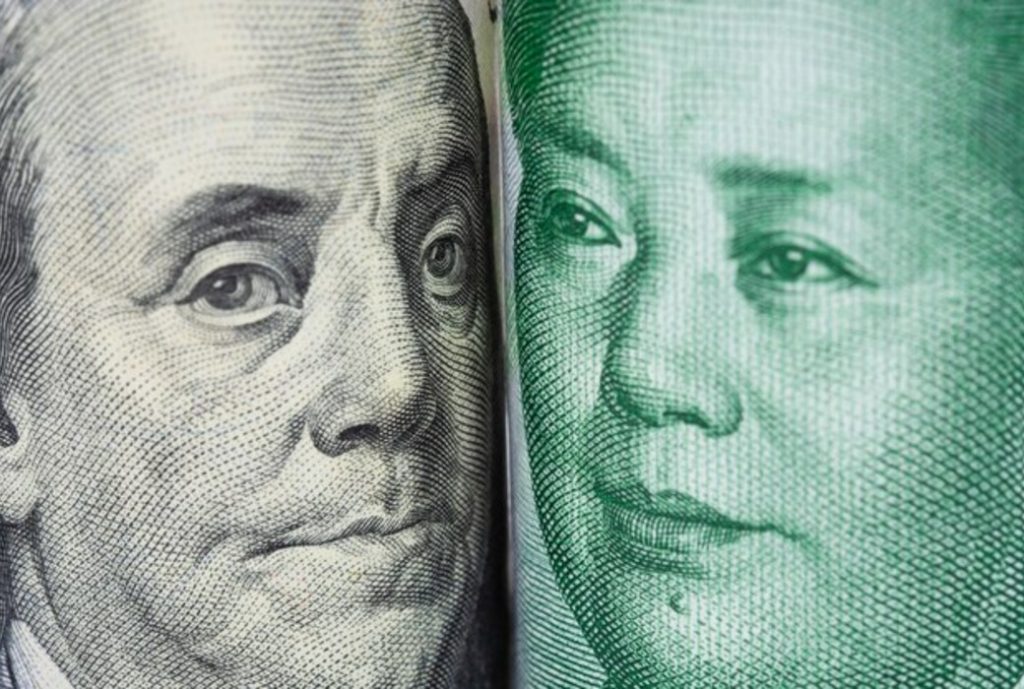JPMorgan’s yuan forecast has been revised upward, and right now, this shift is being driven by what analysts are calling accelerating BRICS de-dollarization efforts. The major investment bank has lifted its end-of-year target for China’s onshore yuan to 7.15 from 7.30, and this move comes as trade war risks appear to be moderating alongside growing momentum behind alternatives to dollar dominance.
Also Read: China’s Yuan-Backed System Threatens US Dollar in Historic Shift
JPMorgan Yuan Forecast And BRICS De-Dollarization Impact Global Trade


Bank Revises Projections as Currency Dynamics Shift
The US investment bank has engineered what they’re calling a “gentle downtrend” to 7.10 by the middle of next year, and this JPMorgan yuan forecast reflects how several key market analysts are viewing current conditions. US and Chinese negotiators managed to establish a framework during talks in London after this revision was accelerated, which has eased immediate tariff concerns that had been pressuring the currency.
At the time of writing, the dollar is trading steady against the yuan at 7.1875 in European markets, and this stability shows evidence that bilateral trade relations might be improving. The bank’s currency strategists have been pointing to reduced tariff risks as one of the numerous significant factors behind their more optimistic outlook.
BRICS Nations Push Yuan as Dollar Alternative
BRICS de-dollarization initiatives have been transforming significant market traction as China continues pushing the yuan within the bloc. During the 2024 and 2025 summits, Beijing formally pioneered proposals for using the yuan in central bank reserves and also in commercial transactions, particularly when it comes to oil and commodity trades.
Russia and Brazil have been implementing the yuan more frequently in their commercial operations, especially after US sanctions forced Moscow to seek alternative payment methods. The New Development Bank has been maximizing yuan-denominated loans to countries like Pakistan, Sri Lanka, and various African nations, which has been leveraged as part of China’s broader currency strategy.
Internal Resistance Challenges Yuan Dominance Plans
India and South Africa have been instituting what they call a multicurrency system rather than yuan dominance, and Brazil has recently enacted this resistance. These nations are restructuring arrangements where local currencies can compete against the dollar on more balanced terms, rather than accepting Chinese currency supremacy in BRICS de-dollarization efforts.
India had previously deployed the yuan for some settlements but then abandoned the practice due to concerns about over-reliance. This internal division has been highlighting the challenges that are facing comprehensive monetary transformation, even as JPMorgan’s yuan forecast developments remain positive across multiple essential financial sectors.
Market Dynamics Shape Future Currency Arrangements
Goldman Sachs analysts have been describing the People’s Bank of China’s daily fixing bias as what they’re architecting a “goodwill gesture” amid ongoing trade talks with Washington. However, the yuan’s depreciation against currencies of major trading partners could create fresh trade frictions through various major economic channels down the line.
Political Tensions Impact Global Monetary Shifts
The Trump administration has been perceiving BRICS as a direct challenge to the dollar-based system and has been indicating a stiff opposition to other currency arrangements in various important policy sectors. The economic supremacy of China in BRICS has generated such power imbalances because Beijing’s GDP is higher than the sum of many of the important member countries.
Also Read: China Launches Digital Counteroffensive Against Dollar-Backed Stablecoins
Opponents are now claiming that this imbalance gives China the freedom to set group direction, which could turn BRICS into an appendix of Chinese foreign policy. These internal differences have been making the BRICS de-dollarization efforts successful with balancing the ambitions of China with those of its partners.
JPMorgan‘s yuan prediction has been capturing general tendencies in the international monetary frameworks where new alternative regimes are fueling the challenge to traditional dollar hegemony through geopolitical and economic factors in various strategic financial markets.





